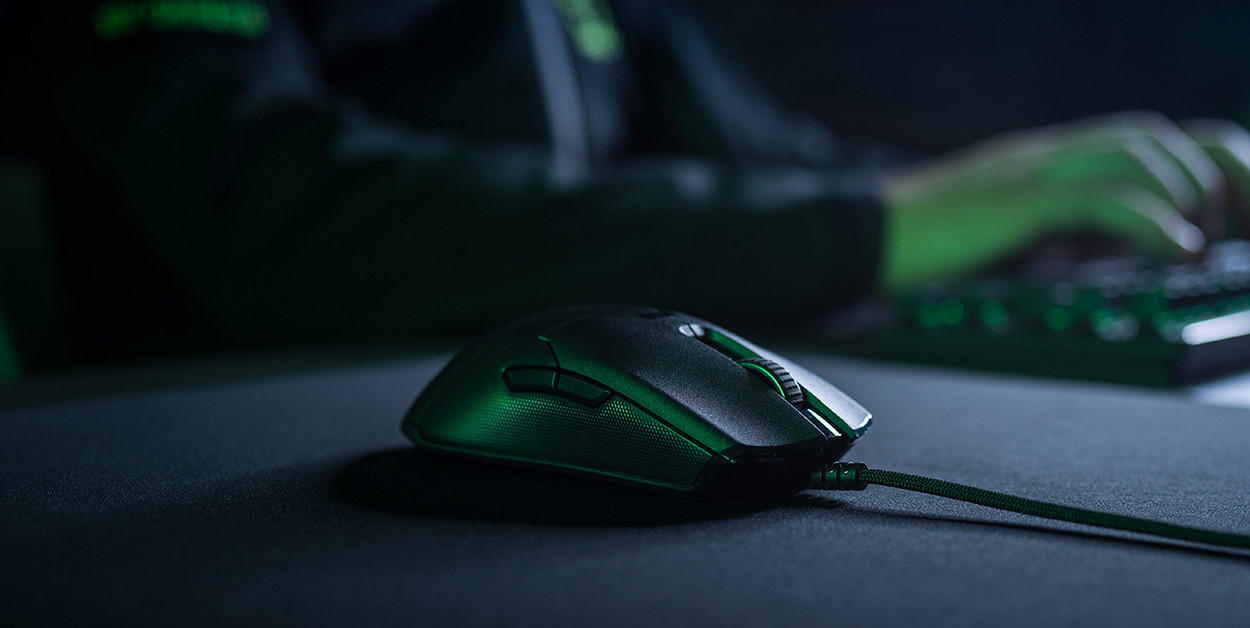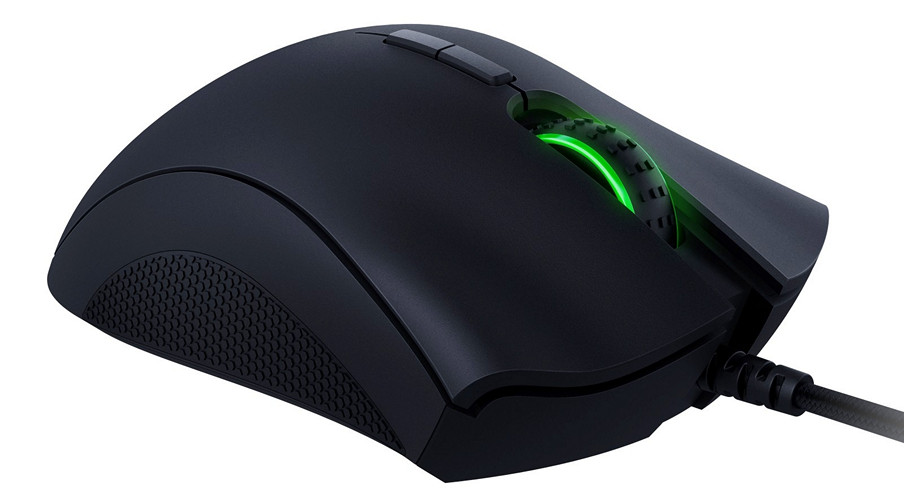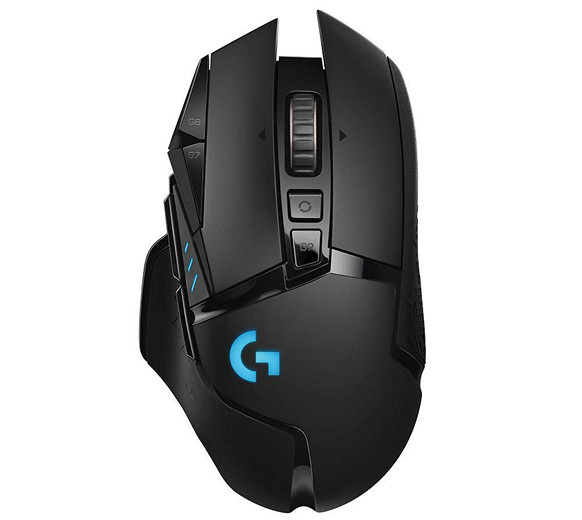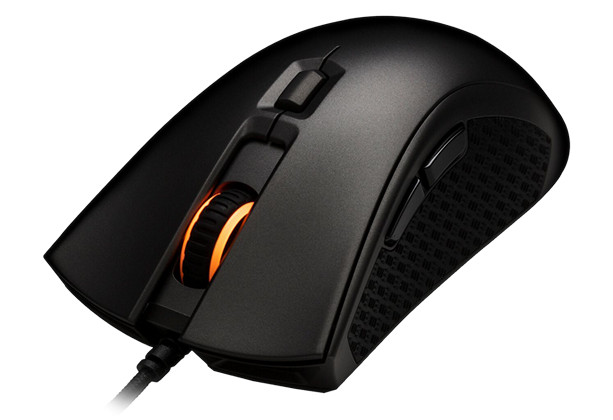Best gaming mice
When it comes to gaming, nothing beats having a good mouse for your gaming comfort. Having a mouse that perfectly fits your hand, includes the right set of features and a super-strong sensor will inevitably improve your gameplay, the quality of your punches, and your sense of satisfaction when you win.
Contents:
- How to choose a gaming mouse
- 1. Razer Deathadder Elite
- 2. Razer Naga Trinity
- 3. Corsair M65 RGB Elite
- 4. Logitech G502 Lightspeed Wireless
- 5. HyperX Pulsefire FPS Pro
How to choose a gaming mouse

- Optical or laser?: Both types of sensors offer excellent interaction, but optical mice offer slightly higher accuracy, while laser models work on more surfaces. If you're particularly picky, opt for an optical sensor, preferably designed or developed by PixArt.
- Wireless or Wired?: Wireless mice have come a long way in the past few years, but they still have drawbacks that include limited battery life (especially with RGB backlighting) and possible delays. If you prefer wireless, aim for a battery life of 30 hours or more on your mouse. You should also decide what type of connectivity is best: Bluetooth, 2.4GHz Wi-Fi, or both. Bluetooth is convenient for switching between multiple devices, but takes time, while Wi-Fi will require a USB dongle that's easy to lose.
- palm grip, fingertip grip or claw grip?: It's a good idea to find out how you're gripping the mouse. There are three common types of grip on a mouse.
- The palm grip -the base of your palm is on the back of your mouse and your fingers are resting on top of it.
- A "claw" grip -Your wrist rests on the mouse pad, your palm is not touching the mouse, and your fingertips are touching the mouse edges and buttons.
- Fingertip grip - Your wrist and palm are raised above the mouse pad and mouse, and your fingertips are only grasping the mouse along its edges and buttons.
Knowing your grip style can help you find a mouse that's right for you, because each grip type is usually molded to your hand size, and so a mouse designed for fingertip grip will probably be larger than a mouse designed for palm grip.
- DPI, CPI, IPS and acceleration?: DPI (Dot Per Inch) and CPI (Count Per Inch) are actually the same marketing terms. Traditionally, we have used DPI in printing to indicate how many dots per inch will be printed in terms of image clarity. CPI, however, refers to the number of readings it takes for a mouse to travel one inch of distance in real space. For example, if the CPI is 100, the cursor on the screen will move 100 pixels when the mouse passes 1 inch over the surface.
A higher CPI does not necessarily mean a better mouse sensor, either. A combination of both CPI and IPS defines sensor quality. IPS (Inch Per Second) is the maximum speed at which the mouse sensor can track the aforementioned reads. The higher the IPS combined with CPI, the better the sensor.
Finally, acceleration is the maximum acceleration a mouse can tolerate before its sensor has trouble tracking the surface; for example, if you throw an object back and forth in short, sharp movements, some mice can "delink" from the cursor on the screen when they reach a certain level of acceleration.
1. Razer Deathadder Elite

Best FPS/RTS Mouse
Sensor: PixArt PMW 3389| CPI: 16,000 | IPS: 450 (11.43 m/s)| Acceleration: 50 g | Interface: USB | Ergonomics: right hand, palm grip and claw grip | Programmable buttons: 7 | Weight: 105 g | Dimensions: 127 x 70 x 44 mm (LxWH)
The Razer Deathadder has long been known as one of the most famous mice in world eSports. Its simple yet ergonomic design hasn't changed much since the original 2006 model. Yes, some gamers may not like flared left and right click buttons. That said, it's still hard to deny how comfortable the non-abrasive, sandblasted black finish is when you finally put your palm on this pointer.
However, the standout feature of the Deathadder Elite is its sensor, a custom-made optical PixArt PMW 3389. Originally developed by PixArt in conjunction with Logitech, it has also been updated with some tweaks to Razer's own firmware. This makes the mouse incredibly accurate in the game. A maximum CPI of 16,000 paired with the Rager Synapse software package makes it easy to customize the rodent for any of your gaming scenarios.
And then there are the switches. Developed in conjunction with Omron, these beauties feature a simulated mechanical, keyboard-like click thanks to Razer's integrated tactile notch in the switch itself. Even a very avid gamer will have a hard time shortening their lifespan, as up to 50 million clicks are expected before theoretical failure.
Add to that an epic price point and a 2-year warranty, and it's clear that the Deathadder Elite is a good choice for anyone looking to break into the ultra-competitive world of multiplayer FPS/RTS games.
Advantages: Simple design - Exceptional sensor - Impressive Omron switches
Disadvantages: No weight adjustment
2. Razer Naga Trinity

Best MMO Mouse
Sensor: PixArt PMW 3389| CPI: 16,000 | IPS: 450 (11.43 m/s)| Acceleration: 50 g | Interface: USB | Ergonomics: for right hand, palm girth | Programmable buttons: up to 19 | Weight: 120 g | Dimensions: 119 x 74 x 43 mm (LxWxH)
In MMO, versatility is key; the more buttons you have, the more actions you can assign to macros, talk keys or other important tasks.
A common problem with large MMO mice is that they often only have one very specific way of grip with a littered key grill on the left side or something like that. But Razer is hoping to change that trend with its latest Naga add-on called Trinity, which gives you a choice of three separate ways to grip your left hand. There's a simple numeric keypad with 12 switches, a circular keypad with 7 switches positioned around it, and, of course, the standard two side button combination like most modern gaming mice.
In addition, inside you also get the same PixArt sensor as the Deathadder Elite, a nice RGB backlight and ergonomic pinky placement. Obviously, these are the heaviest mice on our list, not even counting Logitech's G502 wireless lineup, but for MMOs and all the aforementioned key combinations, the Razer Naga Trinity is a great choice.
Advantages: Quality sensor - Compact, hot-swappable buttons - Ergonomic style
Disadvantages: Expensive - Quite heavy
3. Corsair M65 RGB Elite

Best mouse for wide grip
Sensor: PixArt PMW 3391| CPI: 18,000 | IPS: 400 (10.16 m/s)| Acceleration: 50 g | Interface: USB | Ergonomics: right hand, palm grip and claw grip | Programmable buttons: 9 | Weight: 97 - 116 g | Dimensions: 116 x 76 x 39 mm (LxWH)
Despite the rather goofy design, the Corsair M60 mouse series has made a name for itself over the years. So, it's not ideal for a first-person shooter or MOBA game, but let's face it: not everyone needs one.
The M65 RGB Elite mouse is a continuation of Corsair's original M60 series and offers a solid, wide design combined with pleasing aesthetics and a powerful sensor. Its wide, angular short body tends to fit a small, wide palm well, as opposed to owners of long, thin hands. A full palm grip or "claw" grip is preferred on this model, although the ergonomic style of the mouse itself is always a bit off-putting depending on the shape and size of your hand... This thing is as premium as its sensor, which allows you to adjust sensitivity in 1 CPI increments if you want.
On top of that, you also get a pretty refined (for Corsair) RGB lighting, an adaptable weight system, and a separate button for temporary CPI resetting under your thumb, which is a bit odd. The overall ergonomic design is suitable for RTS and RPG gamers, but what stands out significantly against the specs of this thing is its penchant for the FPS genre. The M65 RGB Elite is a very confident jack of all trades, albeit with a higher price tag. This mouse may not know exactly what it wants to be, but that doesn't stop it from succeeding in any game.
Advantages: Stylish design - Low price - Flawless sensor - Good RGB backlighting
Disadvantages: Specific ergonomics
4. Logitech G502 Lightspeed Wireless

Best wireless mouse
Sensor: Logitech HERO| CPI: 16,000 | IPS: 400 (10.16 m/s)| Acceleration: 40 g | Interface: USB/wireless | Ergonomics: for right hand, palm and fingertip grip | Programmable buttons: 11| Weight: 97 - 116 g | Dimensions: 116 x 76 x 39 mm (LxHW)
Battery life is the most important feature of any wireless gaming mouse. Losing control halfway through a game is a huge strain. There's no greater frustration than frantically frantically trying to find a USB cable while your gaming character is already repeatedly trampled into the ground.
The Logitech G502 Lightspeed Wireless Gaming Mouse is designed to change that. It's compatible with Logitech's massive Powerplay gaming pad, which will solve the problem of sudden shutdowns with built-in Qi wireless charging. With a stellar sensor, the G502 is a welcome addition to any self-respecting gamer's arsenal.
Logitech's HERO sensor is packed with impressive technology. It features a Variable Frame Rate Detector to reduce or increase its lag time based on mouse movement. It reduces power consumption and has a response time that ranges from 1ms to 8ms. It also has a maximum CPI of 16,000 and can track over 400 IPS (inches per second).
Disadvantages? The Logitech G502 is heavy at around 114g (not including the extra 16g weight of the weights) and also quite tall. Your wrist may take some time to get used to it. Without the Powerplay mouse pad, you can expect 48 hours of use without recharging with continuous use, or up to 60 hours with the backlight off.
Advantages: Unique sensor - Wireless charging on the fly (with matching mouse pad)
Disadvantages: Expensive - Heavy
5. HyperX Pulsefire FPS Pro

Best budget gaming mouse
Sensor: PixArt PMW 3389| CPI: 16,000 | IPS: 220 (5.58 m/s)| Acceleration: 30 g | Interface: USB | Ergonomics: right hand, palm grip and "claw" grip | Programmable buttons: 6 | Weight: 95 g | Dimensions: 128 x 71 x 42 mm (LxWH)
Overall, the design of the HyperX Pulsefire isn't too different from our number two on the list, echoing its long, elegant shape, and the sprawling left and right buttons create a very similar feel to the Deathadder Elite. The mouse itself is also lightweight, fitting in at 95g without the cable. Sure, it's not one of the ultra-light 50g monsters or the hefty 120g wireless powered juggernauts, but the HyperX Pulsefire FPS Pro balances the two perfectly, perfect for those who might not be willing to pay full price for something more premium.
The HyperX Pulsefire FPS Pro uses the PixArt PMW 3389, which is exactly the same sensor as the Deathadder Elite, albeit without Razer's proprietary firmware. You get the same maximum CPI of 16,000 with zero hardware acceleration or anti-aliasing below 3000 CPI and a nice feel to it tracking that you'd hardly find in another mouse at this price point. The only downside is the lower IPS and acceleration rating, but that said, the price is reasonable.
Overall, the ergonomics are on par too. The mouse is ideal for those who prefer a "claw" grip or hold the pointer with the whole palm of their hand. Although the FPS Pro does not have the ultra-low weight of the expensive FPS models, it still gives gamers of any genre a lot of advantages.
Advantages: Simple inspiring design - Advanced sensor - Great price
Disadvantages: Cable can twist - Not quite an FPS mouse
For those who want to know more:
- Top 10 best-selling gaming mice from Aliexpress
- ASUS ROG Strix Carry review: A wireless gaming mouse for travel gamers
- ASUS ROG Strix Scope review: a gaming mechanical keyboard for maximum Control
- Logitech G305 Lightspeed review: a wireless gaming mouse with great sensor
- SteelSeries Rival 650 Wireless review: a wireless gaming mouse with dual sensor and fast charging
- ASUS TUF Gaming K7 review: a lightning fast gaming keyboard with dust and moisture protection
